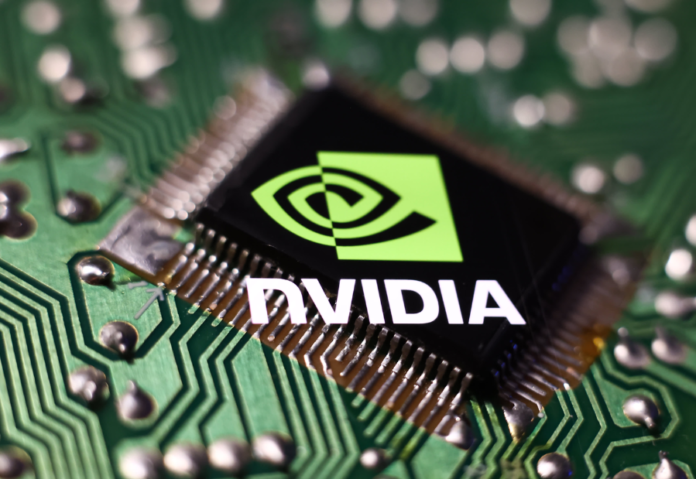Nvidia’s Chief Executive Jensen Huang made several announcements at his company’s annual developer conference with the goal of keeping the chip maker at the forefront of the artificial intelligence market.
In the center of Silicon Valley, Huang unveiled Nvidia’s newest technology, which is 30 times faster than its predecessor at some tasks, on a stage set like a hockey arena.
In addition, he presented a new suite of software tools designed to facilitate the sale of AI models to Nvidia customers—the majority of the largest technology businesses in the world—by developers.
Whether Nvidia can keep its 80% market share in AI processors will depend on the chips and software the firm announces at GTC 2024.
Wearing his trademark leather jacket, Huang remarked, “I hope you realize this is not a concert,” laughing that the day’s keynote will be filled with complex physics and math.
It was a reference to Nvidia’s rise to prominence on par with tech behemoths like Microsoft (MSFT.O), which has become a Wall Street standout with sales that more than doubled in its most recent fiscal year to surpass $60 billion. Nvidia was formerly mostly recognized among computer gaming fans.
The B200, the company’s new flagship chip from Nvidia, combines two silicon squares the size of the company’s prior product into a single unit.
Although the B200 “Blackwell” chip is 30 times faster at certain tasks, such as providing chatbot responses, Huang did not provide specific information about how well the chip performs when processing massive volumes of data to train chatbots. The majority of Nvidia’s sales growth comes from this type of work. He did not provide a price, either.
In summary, Huang’s statements did not ignite a fresh wave of enthusiasm for Nvidia’s stock, which has risen 240% in the last year, positioning it as the third most valuable business in the U.S. stock market, only exceeded by Apple (AAPL.O) and Microsoft.
In extended trading, Nvidia’s shares slid 1.4%, while Super Micro Computer (SMCI.O.), which uses Nvidia’s chips to create AI-optimized servers, saw a 4% decline. During the presentation, Advanced Micro Devices’ (AMD.O.) shares fell by around 3%.
Nvidia is among Plumb Funds’ top assets, and Tom Plumb, CEO and portfolio manager, said the Blackwell chip was not surprising.
However, it serves as more evidence that this business remains at the forefront and is the industry leader in graphics processing. This does not imply that the market will not grow to a size that will allow competitors like AMD to enter. However, it indicates that their lead is essentially unbreakable, “Plumb stated.
Major clients of Nvidia, such as Amazon.com (AMZN.O), Alphabet (GOOGL.O), Microsoft, OpenAI, and Oracle (ORCL.N), among others, are anticipated to employ the new chip for both their own artificial intelligence (AI) products and cloud computing services.
Additionally, Nvidia is starting to sell entire systems rather than just individual processors. Its most recent version has 36 central processors and 72 AI chips. It weighs and has 600,000 pieces overall.
Since Nvidia’s biggest clients manufacture their own chips and rivals release new products, several analysts predict that Nvidia’s market share will decline by several percentage points in 2024.
“Rivals like AMD, Intel (INTC.O.), startups, and even Big Tech’s own chip aspirations threaten to chip away at Nvidia’s market share, particularly among cost-conscious enterprise customers,” Jason Bourne, an analyst at Insider Intelligence, stated.
Even though Nvidia is mostly recognized for its hardware products, the business also produces a sizable array of software solutions.
Just as a competent computer operating system can help apps perform well, the new software tools called microservices increase system efficiency across a wide variety of uses, making it easier for a firm to incorporate an AI model into its work.
Nvidia expanded its software portfolio beyond artificial intelligence to include 3-D model software that simulates the real environment. Huang also announced alliances with design software firms Ansys (ANSS.O.), Cadence (CDNS.O.), and Synopsys (SNPS.O.) for work on designing automobiles, aircraft, and other products. In the wake of Huang’s remarks, shares of the three companies increased by almost 3% during extended trading.
Huang added that Apple’s new Vision Pro headset would be able to stream 3-D worlds using Nvidia’s software.
Additionally, Nvidia unveiled a new range of processors specifically made for automobiles that have the ability to operate chatbots inside of them. The business strengthened its existing close ties with Chinese manufacturers by announcing that Xpeng and BYD (002594.SZ), producers of electric vehicles, will also use its new chips.
As he was wrapping up his keynote address, Huang introduced a new line of chips that might be used to build humanoid robots and invited a few of them to come up to the stage.
Also read: Women in the technology industry is constantly increasing, says Rajita Bhatnagar
Do Follow: CIO News LinkedIn Account | CIO News Facebook | CIO News Youtube | CIO News Twitter
About us:
CIO News, a proprietary of Mercadeo, produces award-winning content and resources for IT leaders across any industry through print articles and recorded video interviews on topics in the technology sector such as Digital Transformation, Artificial Intelligence (AI), Machine Learning (ML), Cloud, Robotics, Cyber-security, Data, Analytics, SOC, SASE, among other technology topics.






